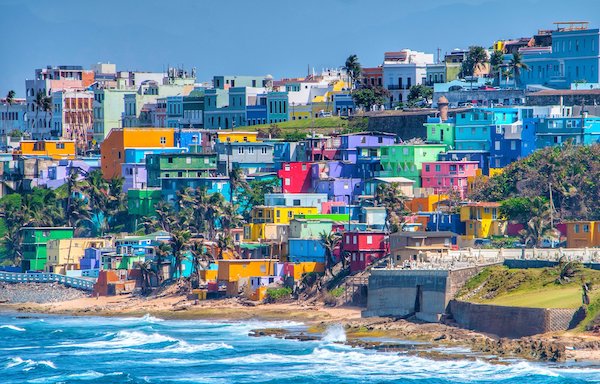
Facts About Puerto Rico’s History
1.) Puerto Rico means “rich port” in Spanish. Its name originated from a large amount of gold Spain found on the island.
2.) In 1493, Christopher Columbus was the first European to discover Puerto Rico. He was only on the island for two days, years before Spain began colonizing the island. Over the years, France, the Netherlands, and England all attempted to invade the island.
3.) Puerto Rico is a piece of the Greater Antilles, which accounts for most of the large islands in the Carribean. It is an archipelago that includes Mona, Culebra, and Vieques along with the main island.
4.) Puerto Rico and Cuba were the last of Spain’s colonial holdings in North and South America.
5.) Initially, Columbus called Puerto Rico “San Juan Bautista” after John the Baptist. Before him, the island was home to Taíno Indians, who called the island “Borinquen.”
6.) Spanish colonization killed and displaced the native Taíno Indians. Slaves were imported from Africa to grow sugar cane, coffee, and tobacco.
7.) Juan Ponce de León, Colombus’s lieutenant who is known for searching for the Fountain of Youth in Florida, was Puerto Ricos’ first governor.
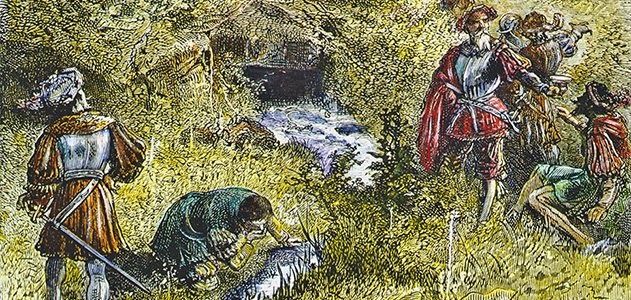
8.) For a brief period, Puerto Rico was known as an overseas province of Spain. This gave them full voting power in parliament, though the Spanish Monarchy limited provencal political power.
9.) Puerto Rico had a strong independence movement from the 19th century on. Ramón Emeterio Betances led a failed result against the Spanish government in 1868, known as the Grito De Lares (Cry of Lares).
10.) The US offered to purchase Puerto Rico and Cuba for $160 million. Spain refused, which they surely regretted after the Spanish-American War.
11.) After the Spanish-American War, the Treaty of Paris awarded the US Guam, the Philippines, and Puerto Rico. The cost? Only $20,000,000, $140,000,000 less than the US offered Spain years before.
12.) During the 17th and 18th centuries, Spain focused most of its effort on its continental holdings. During the 19th century, the monarchy began to invest in Puerto Rico. Between 1800 and 1900, its population grew from 150,000 to nearly a million.
13.) The US changed the island’s name to “Porto Rico” in 1898. Thirty-three years later, in 1931, it reverted it to “Puerto Rico.”
14.) Puerto Rico was a holdout for slavery in the Americas. It finally abolished the practice in 1873.
Facts About Puerto Rico’s Government
15.) While many people, even in the US, think Puerto Rico is its own country, it is still a US territory.
16.) Puerto Ricans don’t have US congressional representatives and can’t vote in presidential elections.
17.) Puerto Rico drafted its constitution in the 1950s. The island’s government is split into executive, legislative, and judicial branches modeled after the US constitution.
18.) A nonvoting representative is Puerto Rico’s delegate to congress. The current representative in 2020 is Jenniffer González.
19.) The latest referendum in Puerto Rico occurred in 2012. A majority voted for Puerto Rico to end its territorial status, and of that, many wanted statehood. Nothing has come from this referendum.
20.) Puerto Rico has three main political parties – the Puerto Rican Independence Party (PIP), the Popular Democratic Party (PPD), and New Progressive Party (PNP). Each party has a strong belief about Puerto Rico’s government status, with only the PIP wanting a full separation from the US.
21.) As of July 25, 1996, the US officially recognized Puerto Rican citizenship.
Puerto Rico’s Culture, Tourism, Economy, and Geography
22.) Puerto Rico is 75.8% White, 12.4% Black, $3.3% mixed, .5% Indigenous, and 7.8% other. 94.3% consider Spanish as their first language instead of English.
23.) Over the last decade, Puerto Rico’s population has shrunk from $3.7 million to 3.2 million. This decrease has been a direct result of hurricanes and earthquakes that have devastated the island.
24.) Family and education are more critical to many Puerto Ricans than money. Though many still use cars, clothes, and electronics to carve out their own identity.
25.) Cock-fighting is considered the national sport of Puerto Rico. It employes 27,000 people in a $100 million industry. As of December 18, 2019, the US government has entirely banned cock-fighting across all US territories.
26.) Puerto Rico’s film industry has its roots in 1912, when the first non-documentary film Un Drama En Puerto Rico was released.
27.) Academy Award winners Jose Ferrer, Rita Moreno, and Benecio Del Toro all hail from Puerto Rico. Other famous actors include Joaquin Phoenix and Luis Guzman.
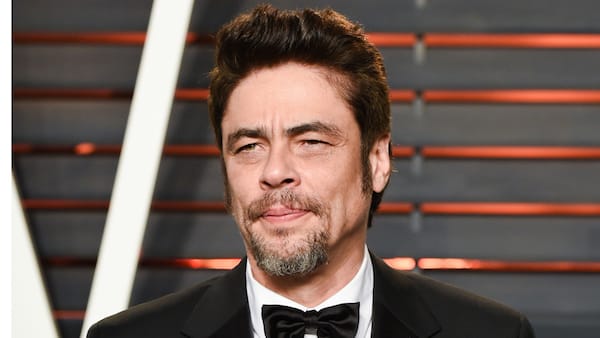
CREDIT: BILLY FARRELL/BFA/REX/SHUTTERSTOCK
28.) Though Puerto Ricans consider themselves Americans, they are passionate about their island and culture. They don’t refer to themselves as Americans, but rather “Puertorriqueños” or “Boricuas.”
29.) Many people will eat a large breakfast, a quick lunch, and a large dinner. Some will eat fast-food, but most people prefer native cooking. Puerto Rican cuisine is a fusion between traditional Spanish cooking practices and the wide variety of fruits and vegetables found on the island.
30.) Puerto Ricans do celebrate American food-based holidays like Thanksgiving, but with their own twist. For example, they’ll cook Thanksgiving turkeys with adobo.
31.) For Puerto Ricans, identity is defined more commonly by nationality rather than ethnicity.
32.) There are 49 pharmaceutical plants across Puerto Rico. Why? The water in parts of the island is so pure that you don’t need to treat it when manufacturing medicine.
33.) An estimated 5 million people visit Puerto Rico every year. That’s more than its entire population!
34. The optimal time of year to visit Puerto Rico is between December and April due to hurricane season.
35.) Founded in 1521, San Juan is the capital and largest city in Puerto Rico. It currently has a population of 350,000 people. Its metro includes 2.6 million people, which is about 80% of Puerto Rico’s population.
36.) Hurricane Maria struck San Juan in 2017, causing over 3,000 fatalities, and $91 billion in damage. After a slow rebuild, as of 2020, San Juan is doing much better.
37.) Barceloneta, also known as “pineapple city” due to is pineapple plantations, is part of the San Juan-Caguas-Guaynabo metro area. Barceloneta is particularly famous for having blue sand beaches.
38.) Arroz con Gandules is the national dish of Puerto Rico. It is a combination of rice, pork, and pigeon peas cooked in sofrito.
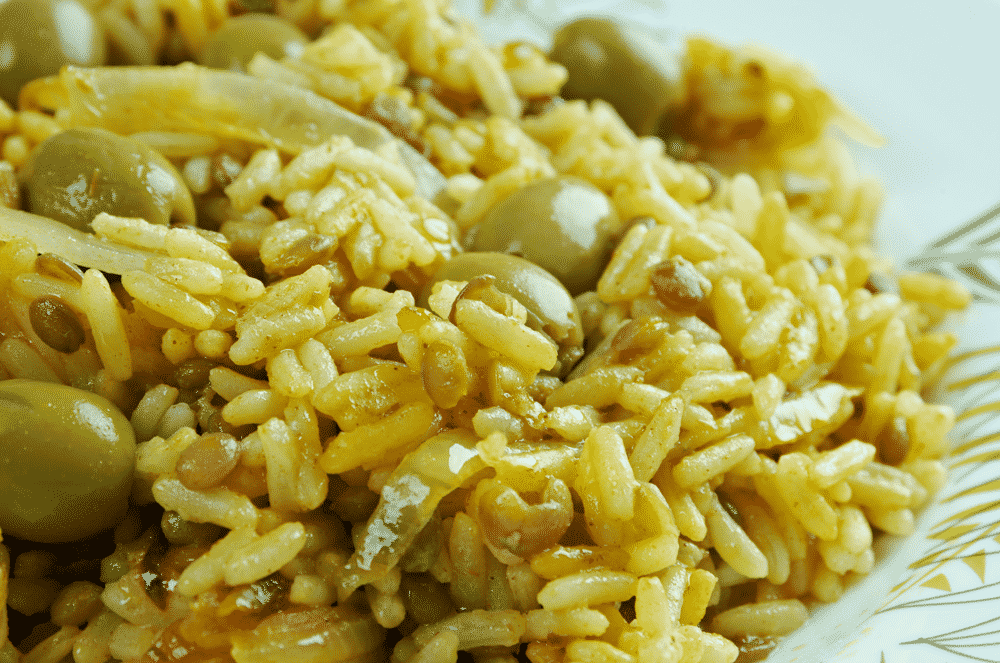
39.) Puerto Rico is one of the few places in the US that doesn’t observe daylight savings time.
40.) El Yunque is the only tropical rain forest in the US Forest System. The forest is free from snakes, bears, or any dangerous animals, making it the perfect rainforest to visit! El Yunque receives 120 plus inches of rain each year.
41.) The climate in Puerto Rico is very temperate. Temperatures hover between 70 and 80 degrees for most of the year. The coldest it gets is in the mountains, which only get down to 60 degrees.
42.) The legal age to consume alcohol is only 18 years — great news for American students visiting!
43.) Though part of America, Puerto Rico competes on its own in the Olympics and Miss Universe. Puerto Rico has five Miss Universe winners!
44.) The Arecibo Observatory is the world’s biggest single-aperture telescope. Movies like Goldeneye and Contact feature the telescope.
45.) Camuy is an extensive cave system in Puerto Rico. It features 10 miles of caverns and limestone caves. The park built around the cave system is one of the most popular destinations in Puerto Rico.
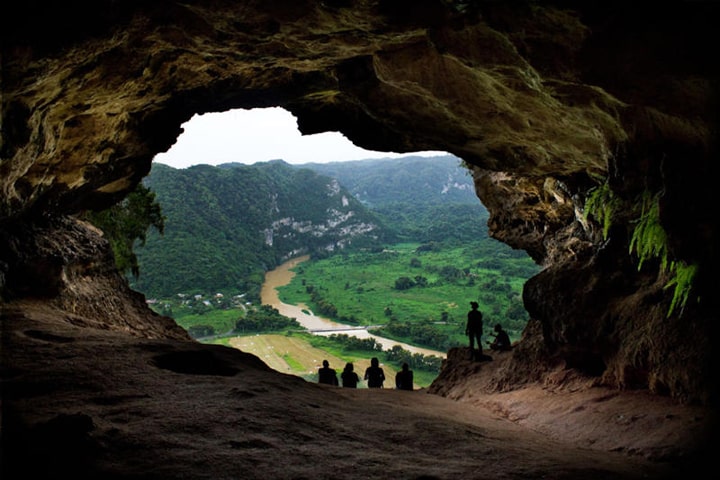
46.) San Juan is home to the Bacardi rum factory. Established in 1862, it is the world’s largest rum distillery. Every 24 hours, it produces 100,000 liters of rum, accounting for 85% of Bacardi’s total supply.
47.) At one point, Puerto Rico imported Mongoose from India to control reptile populations. Today, they are an invasive species that is damaging native species and plants.
48.) As of 2010, more Puerto Ricans live on the mainland than Puerto Rico.
49.) Cuba and Puerto Rico have the same flag with inverted colors. They were designed during the same year in New York by exiled citizens of Puerto Rico and Cuba.
50.) “Coqui” is a frog that is native to Puerto Rico. It is an unofficial symbol of the island. Recently they have been seen in Hawaii, where they’re considered a pest.
51.) San Juan has the 20th busiest port for cruise ships in the world, with over 14 million passengers every year.
52.) Puerto Ricans are exempt from the US federal income tax because they don’t have direct government representation.
53.) There are no visa requirements for Americans to visit Puerto Rico (duh!), but international travelers need to meet the same conditions as if they were visiting the mainland.
54.) The highest point in Puerto Rico is Cerro de Punta, which is 4,553 feet.
55.) Ricky Martin is one of Puerto Rico’s most famous musicians. More recently, the super hit “Despacito” has put Puerto Rican musicians Daddy Yankee and Luis Fonsi on the map.
56.) Puerto Rico has a coastline that is 311 miles long. Amazingly, 270 miles of that are pristine beaches.
57.) Though they use the US dollar, many Puerto Ricans refer to it as “dolar” or “peso.”
58.) Baseball is an extremely popular sport in Puerto Rico. Puerto Rico has produced many fantastic baseball players like Iván Rodríguez, Roberto Clemente, Roberto Alomar, and Yadier Molina. There are over 100 Puerto Ricans active in the MLB currently.
59.) The first cooking grill and hammock originated with the Taíno Indians.
60.) Catholics are the largest religious group on the island. Estimates range that between 38% and 70% are Catholic, with the remaining population is mostly protestant.
61.) Puerto Rico has a massive debt problem. Debt currently is $72 billion, which is over 100% of its GNP.
62.) Puerto Rico has been experiencing a recession since 2006, only experiencing four quarters of economic growth in that period.
63.) When compared to the US, Puerto Rico is more impoverished than Mississippi, with 41% of its population living below the poverty line. Compared to the rest of Latin America, it has the highest GDP per capita.
64.) Its major trade partners are Ireland, Japan, and the US. Most of its imported goods come from China, Hong Kong, and Taiwan.
65.) Cost of living in Puerto Rico is expensive compared to the median income. It beats Atlanta, Dallas, and Seattle. Housing prices are similar to Miami and Los Angeles.
66.) Puerto Rico is expensive partly due to the Jones Act, which disallows foreign ships from carrying cargo between two American ports. This would drastically drive down the cost of goods. Puerto Rico has tried to get itself exempted, but have been turned down by the US government.
67.) The crime rate in Puerto Rico is low, but it does have a higher gun homicide rate than the mainland US. Most of these homicides are drug or gang-related.
68.) The island’s architecture pulls from a wide variety of styles ranging from Spanish colonial to post-modern. Even town to town, there are many regional variations you will find.
69.) The literacy rate in Puerto Rico is 90% – this is better than most states!
70.) The national tree is a Ceiba, the national flower is a Maga, and the National Bird is the Reinita.

71.) Driving can be a bit confusing! Cars drive on the right side, signs are in Spanish, and distance is measured in kilometers!
72.) The streets are paved in blue cobblestone in many of the towns and cities.
73.) Large waves and warm water make Puerto Rico a fantastic surf destination. The best surfing is on the Northwest side of the island between October to February.
74.) Puerto Rican’s love salsa music and helped to invent it! In the 70s, Cuban dance music combined with Puerto Rican plena to create Salsa dancing.
75.) The Pina Colada is the official drink of Puerto Rico. Everyone agrees it was invented there, but many don’t agree on who created it. The Caribe Hilton claims they made the first Pina Colada in 1954, while Barranchina Restaraunt in Old San Juan says the same.
76.) The Puerto Rican coffee industry is massive. There are over 10,000 farms on the island, growing over 20 million pounds of coffee every year.
77.) During the 18th and 19th century, Puerto Rican coffee was the exclusive coffee of the Vatican. Many in Europe believed it was the best coffee in the world.
78.) Puerto Rico is the longest-running colonial holding on the planet. As of 1993, it has been a colony for 500 years.
79.) Boxing is a massive sport in Puerto Rico. Currently, Puerto Rico has produced the 5th most world champions. Because of its low population, there are more champions per capita than anywhere else in the world.
80.) Many boxing record holders hail from the island. Wilfredo Benitez was the youngest world champion at age 17. Daniel Jiminez has the record for the quickest knockout at 17 seconds.
81.) Spain introduced boxing to the haciendas. Employers wanted organized fights amongst their employees to see who were the best fighters.
82.) Samuel Morse set up the first telegraph in Latin America in 1858 in the city of Arroyo.
83.) In 2004, the Puerto Rican Olympic basketball achieved a massive upset against the US team. They won 92 – 73 beating NBA superstars like Lebron James and Carmelo Anthony.
84.) Puerto Rico is home to the Leatherback Turtle, which is the largest turtle on the planet. It is also the 4th largest reptile, only falling behind a few variants of crocodiles.
85.) The population of Puerto Rico is equal to or larger than thirty states in the US.
86.) The Puerto Rico Trench is the deepest area of the Atlantic Ocean(over 8,000 meters). It is what separates the Carribean from Atlantic Ocean.
87.) Earthquakes are prevalent in Puerto Rico. The most massive recorded earthquake was a 7.5 on the Richter scale in 1918. In December 2019 and January 2020, Puerto Rico experienced over 500 earthquakes.
88.) San Juan is the second oldest city in the Americas. Santo Domingo is the only city that is older, founded just a few years before.
89.) Despite not having representation in Congress or the electoral college, a Puerto Rican could become president. It is rare for someone born in a territory to run for president, with the last person being Barry Goldwater, who was born in the Arizona territory.
90.) New York City has the biggest Puerto Rican population in the mainland US. It has more than double the Puerto Rican population of San Juan.
91.) Puerto Rico has three bioluminescent bays – Laguna Grande in Fajardo, Mosquito Bay in Vieques, and La Parguera in Lajas. These are some of the few remaining bio bays on the planet. The only other two are Halong Bay in Vietnam and Luminous Lagoon in Jamaica.
92.) In Vieques or Rincon, you can scuba dive and explore Spanish shipwrecks dating back to the 15th century.
93.) During early Spanish rule, literature was scarce on the island. The Spanish government prohibited any natives from owning or reading books. Juan Rodriguez Calderon changed this with his novel Ocios de la Juventud.
94.) The home is central to life in Puerto Rico. Instead of celebrating birthdays, anniversaries, and weddings in public, it happens at home.
96.) Puerto Rico celebrates their own holidays in addition to honoring some mainland American holidays. Some of these include the San Juan Carnival, Three Kings Day, and Discovery Day.
97.) Dignity is an essential concept to most Puerto Ricans. They respect it in others and desire it for themselves. To achieve it, one must honor obligations and work hard.
98.) A popular style of art in Puerto Rico is called Santos. They are tiny wooden, hand-carved statues of saints.
99.) Maracas originate in Puerto Rico. They’re made from the fruit of the Higuera tree.
100.) Guiros are another instrument that originated in Puerto Rico. They’re carved from a cucumber-like fruit and played with a wire fork called a pua.
- Tulip Mania – The Story of One of History’s Worst Financial Bubbles - May 15, 2022
- The True Story of Rapunzel - February 22, 2022
- The Blue Fugates: A Kentucky Family Born with Blue Skin - August 17, 2021